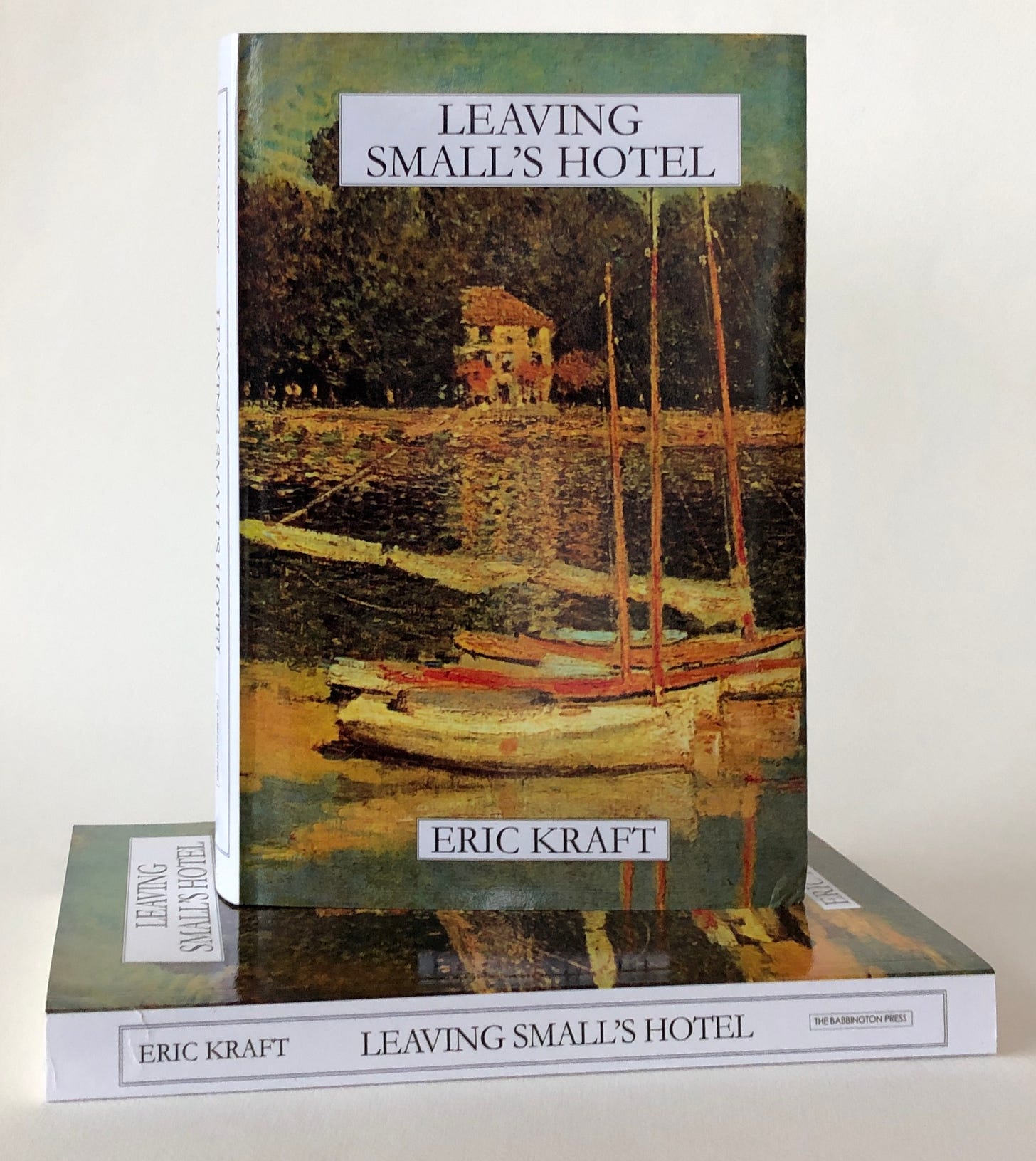MY READING of the thirty-fifth episode of Dead Air, “Thank You for Letting Me into Your Home,” was preceded by the first dinner that Louise and Miranda had prepared entirely on their own, designing the menu to complement the simplest of the dishes on it: bay scallops quickly sautéed in olive oil, drizzled lightly with lemon juice, and sprinkled with pepper — one of my favorites.
A COUPLE OF WEEKS before my thirteenth birthday, I built a radio transmitter from a kit. When I brought my friends Raskol, Spike, Marvin, and Matthew down to my basement to see it, they were impressed. For one thing — I’ll be frank about this — when they looked at the transmitter sitting there on my workbench, I think they found that they had to admire my ability as an assembler of electronics kits. I know I did. For another, I think they were awed by the power of the machine, by the very idea that through the agency of this device I might insinuate myself — or at least my voice — into the homes of my friends and neighbors. I know I was.
“You mean, with this you can broadcast to a regular radio?” Spike asked.
“Yes!” I said. “You can talk into this microphone, and anybody can tune you in.”
Spike picked up the microphone, gingerly.
“Hello?” she said. “Anyone listening?”
“It’s not on,” I said. “But if it were on, people would hear you all over the neighborhood.”
“Wow.”
“Is that legal?” asked Matthew.
“Legal?” I asked right back.
“Isn’t it an invasion of privacy, going into somebody’s house without being asked?”
“I wouldn’t actually be going into their houses — ”
“Your voice would, and if they didn’t want to listen to you, you’d be invading their privacy.”
“I guess I would,” I said, “but people decide that they’re willing to have their privacy invaded when they buy a radio, right?”
“Sure they do,” said Raskol. “They wouldn’t buy a radio if it wasn’t okay with them to have somebody’s voice come out of it.”
“It’s like a deal you make when you buy a radio,” said Marvin. “You agree to let the people on the radio into your house.”
“Of course,” I said. “Of course. That’s why some of the announcers say ‘Thank you for letting us into your home’ at the end of the show. ‘Letting us into your home,’ get it? If you’re on the radio, people let you in.”
“Sure,” said Spike, giving Matthew a punch, “When you turn the radio on, it’s like saying, ‘Hi. How you doin’? Come in. Come on in.’”
Matthew frowned. “I don’t know,” he said. “Don’t you need a license or something for this?”
A pall fell over the group. A license. If operating a radio broadcasting transmitter required a license, then we all were immediately convinced, without any need for discussion, that we could never do it. We couldn’t get a license. We were kids.
“The booklet says you don’t,” I said, weakly.
“Really?” said Spike, brightening.
“Yeah, but — ”
Their faces fell.
“ — you’re not supposed to broadcast too far. It says here, ‘With regard to this type of device, regulations issued by the Federal Communications Commission (FCC) provide that, as long as you keep its working range below 250 feet at the low frequency end of the broadcast band, you do not need a license — ’”
“But?” said Spike.
“What do you mean, ‘But?’”
“You had that tone again.”
“Tone?”
“It’s like holding your breath. It comes right before ‘but.’”
“‘ — but there are significant penalties for exceeding that range with an unlicensed transmitter,’” I read reluctantly.
“So,” she said, “what’s the range?”
“I don’t know. I haven’t tried it.”
“You haven’t tried it?”
“No.”
“Why not?”
Why not. Perhaps you know, reader, the reason I hadn’t tried it. The potential for failure was greater than the potential for success. The transmitter could either work or not work. If it worked, people might actually reach out toward their radios, grasp the tuning knob, and turn to my spot on the dial to see what I had to say, or they might ignore me. If they tuned me in, they might find that I had something to say, or they might find empty prattle and long intervals of dead air. Every success brought a new possibility of failure. I had thought this through.
“I don’t know,” I said.
“Come on, let’s try it,” said Raskol, who had apparently not given a moment’s thought to the relative likelihood of success or failure, and in a moment I had the transmitter up and running, and I was standing at my workbench, speaking into the microphone, saying, “Testing, testing,” and Marvin, Spike, Matthew, and Raskol were roaming the neighborhood, knocking on doors and asking my neighbors to let them into their homes to listen to me on the radio.
[to be continued]
Subscribe to The Personal History, Adventures, Experiences & Observations of Peter Leroy
Share The Personal History, Adventures, Experiences & Observations of Peter Leroy
Watch Well, What Now? This series of short videos continues The Personal History, Adventures, Experiences & Observations of Peter Leroy in the present.
Have you missed an episode or two or several?
You can begin reading at the beginning or you can catch up by visiting the archive or consulting the index to the Topical Guide. The Substack serialization of Little Follies begins here; Herb ’n’ Lorna begins here; Reservations Recommended begins here; Where Do You Stop? begins here; What a Piece of Work I Am begins here; At Home with the Glynns begins here; Leaving Small’s Hotel begins here.
You can listen to the episodes on the Personal History podcast. Begin at the beginning or scroll through the episodes to find what you’ve missed. The Substack podcast reading of Little Follies begins here; Herb ’n’ Lorna begins here; Reservations Recommended begins here; Where Do You Stop? begins here; What a Piece of Work I Am begins here; At Home with the Glynns begins here; Leaving Small’s Hotel begins here.
You can listen to “My Mother Takes a Tumble” and “Do Clams Bite?” complete and uninterrupted as audiobooks through YouTube.
You can ensure that you never miss a future issue by getting a free subscription. (You can help support the work by choosing a paid subscription instead.)
At Apple Books you can download free eBooks of Little Follies, Herb ’n’ Lorna, Reservations Recommended, Where Do You Stop?, What a Piece of Work I Am, and At Home with the Glynns.
You can buy hardcover and paperback editions of all the books at Lulu.
You’ll find overviews of the entire work in An Introduction to The Personal History, Adventures, Experiences & Observations of Peter Leroy (a pdf document), The Origin Story (here on substack), Between the Lines (a video, here on Substack), and at Encyclopedia.com.
















Share this post